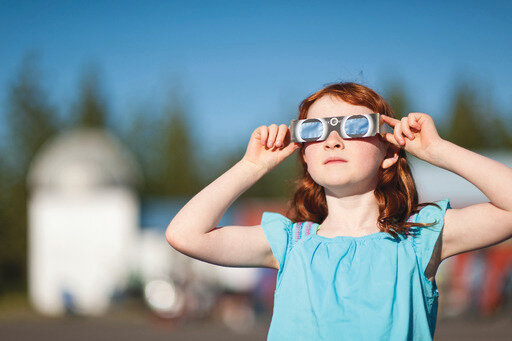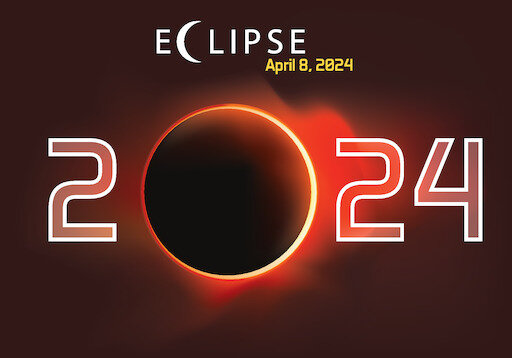Look up, look forward to Eclipse 2024
We can expect 63% of Sun to be partially covered by Moon
CLAY COUNTY – As the old saying goes, “The third time’s the charm.” For the third time since 2017, the “Sunshine State” will become, at least for a moment, the “Where’s all the …
This item is available in full to subscribers.
Attention subscribers
To continue reading, you will need to either log in to your subscriber account, below, or purchase a new subscription.
Please log in to continueDon't have an ID?Print subscribersIf you're a print subscriber, but do not yet have an online account, click here to create one. Non-subscribersClick here to see your options for subscribing. Single day passYou also have the option of purchasing 24 hours of access, for $1.00. Click here to purchase a single day pass. |
Look up, look forward to Eclipse 2024
We can expect 63% of Sun to be partially covered by Moon
CLAY COUNTY – As the old saying goes, “The third time’s the charm.”
For the third time since 2017, the “Sunshine State” will become, at least for a moment, the “Where’s all the sunshine, state?”
The United States will be at the stage of a total solar eclipse on April 8. Sadly, Northeast Florida will not share the full spectacle of the Sun vanishing during the day. However, we can witness a partial solar eclipse, with approximately 63% of the Sun disappearing.
This may sound familiar. Last October, there was an annular solar eclipse in North America. Still, Florida was also on the outskirts of its path and could only see a partial solar eclipse. While this may seem disappointing to some, I must insist that experiencing any solar eclipse is exceptional and mesmerizing and should not be dismissed.
But first, some eclipse basics.
In science, “eclipse” refers to obscuring a light source by another object. Here on Earth, we refer to solar and lunar eclipses. Both are due to an elegant waltz among three celestial orbs.
Lunar eclipses, more common because of their longevity, occur when the Moon is in its full phase, 180 degrees from the Sun. With this alignment, the Moon can pass through part or all of Earth’s shadow, causing the Moon to darken or even appear a coppery-red color.
The Moon is in its new phase during a solar eclipse, its orbit moving it between the Sun and Earth. When the conditions are right, the Moon passes in front of the Sun, obstructing all or part of the Sun from our terrestrial point of view.
There are three different types of solar eclipses:
Total. The disk of the Moon can block the Sun entirely. These are rare and spectacular.
Partial. The Moon blocks only a portion of the Sun as if a “bite” has been taken.
Annular. Here, the apparent size of the Moon is slightly smaller and can only block the center of the Sun. What we observe is a bright ring called an annulus.
Now, I hear you saying, “Tom, you are as awesome as you are wonderful. But if we have a full moon and a new moon every month, why don’t we have a lunar and solar eclipse every month?
An excellent question. I couldn’t have typed it better myself. The Moon’s orbital plane is tilted about five degrees off the plane defined by Earth’s orbit around the Sun. Therefore, the Moon is simply above or below the Sun or Earth’s shadow cone for most months. Only when the plane of the Earth-Sun orbit intersects with the plane of the Moon-Earth orbit do we have eclipse conditions, and even then, the timing of the lunar phases must be just right.
On Monday, the path of totality in the U.S. begins in Texas, south of San Antonio. The track then will proceed toward the Northeast, passing through Oklahoma, Arkansas, Missouri, Illinois, Kentucky, Indiana, Ohio, Pennsylvania, New York, Vermont, New Hampshire and Maine. More than 31 million people live on this path, and thousands more are expected to travel to be a part of it.
But what about those of us in Northeast Florida? While we may not be able to experience the entirety of the Sun being obscured by the Moon, we will see a partial solar eclipse. At maximum, the Moon will block more than half of the Sun’s disk.
This solar eclipse is the third in an Eclipse Triple Crown for the United States. The first was in August 2017, and the second was back in October 2023. The continental United States will not be an audience to another solar eclipse until August 2044.
It is important to remember that looking at the Sun under any circumstances, even during an eclipse, is dangerous and harmful to your eyes. There are ways to view the Sun safely, but always protect your eyes just as you would your skin while in the Sun.
I encourage everyone to participate in this remarkable celestial display, for it will be two decades before this elusive opportunity returns to the region. Being part of it fills us with an almost overwhelming sense of awe and humility of the grand universe and our small place in space. It also provides a unique window of learning – not one described in a textbook or simulated on a screen, but one happening right before us.
Keep looking up.
The partial eclipse will begin at 1:47 p.m., with maximum coverage at 3:05 p.m. It will end at 4:19 p.m.
It is never safe to look at directly at the Sun, even during a solar eclipse. Doing so can cause irreversible damage to your eyes in just a matter of moments. Sunglasses, welder’s glass, or smoked glass will offer protection from the Sun’s intense radiation. There are, however, things that you can do to view the solar eclipse safely, like:
• Certified Solar Viewing Glasses with ISO International Rating 12312-2. These are inexpensive and available online and at some local retail centers.
• Pinhole Projector. This is a safe way to view solar because your back is toward the Sun. A small aperture in a piece of cardboard or stretched aluminum foil will project the silhouette of the Sun safely in front of you. Any type of design can easily be made from materials around the home.
• Household items themselves. Pasta strainers, pegboard, saltine crackers, a record – anything with small holes can be used as a pinhole projector. A fun learning/scrapbook activity would be photographing and cataloging different images of the Sun obtained with different items.
• Nature. Simply standing under a tree with your back to the Sun will work. The tiny spaces between the leaves also act as pinhole projectors, creating many images of the Sun on the ground intertwined amongst the shadows.













